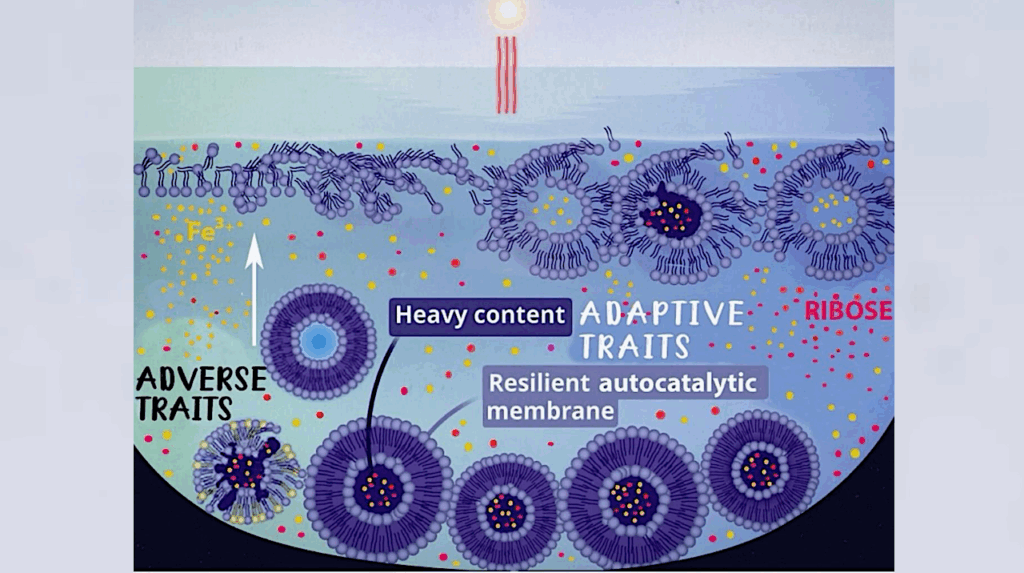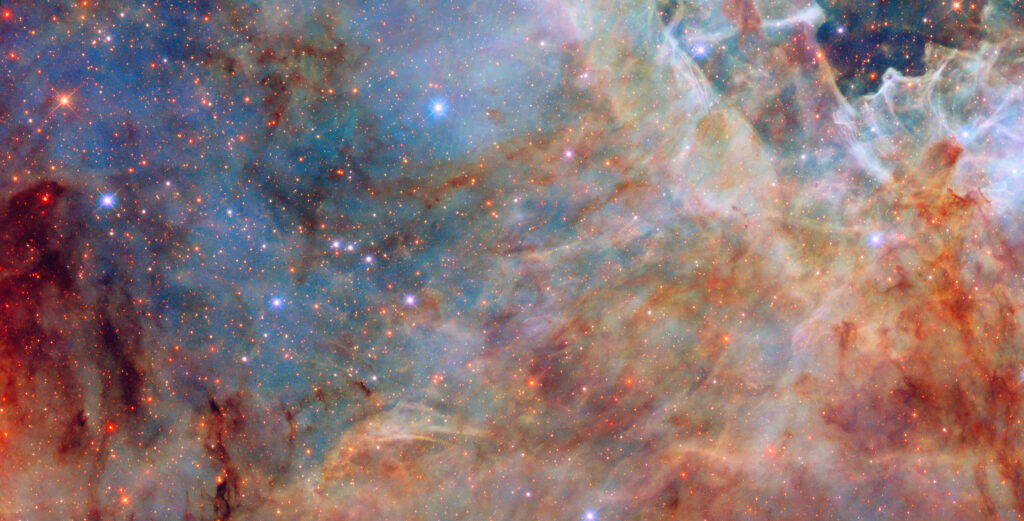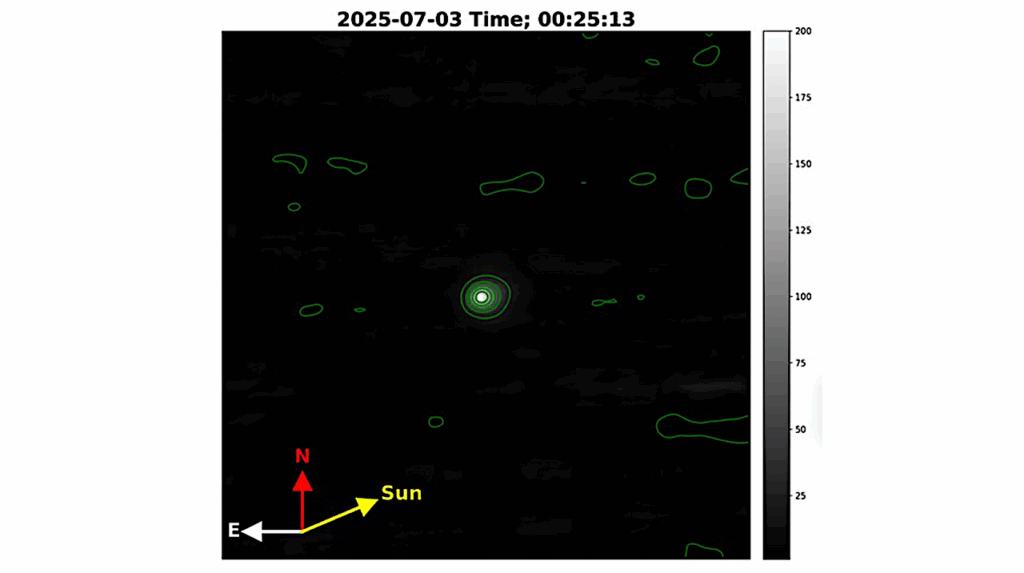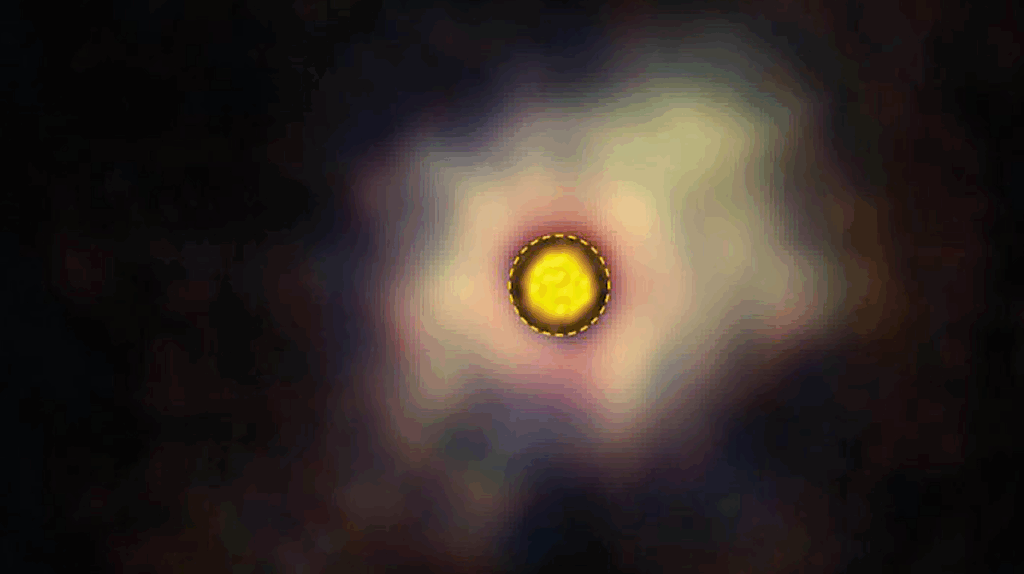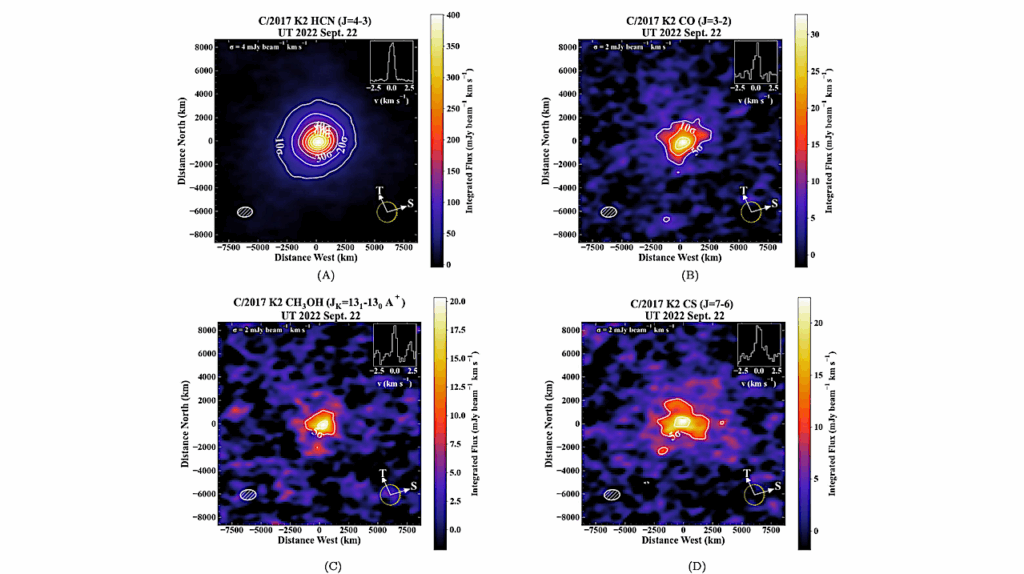Learning More About The Source Of The Water In Our Solar System

Using the Atacama Large Millimeter/submillimeter Array (ALMA), astronomers have detected gaseous water in the planet-forming disc around the star V883 Orionis. This water carries a chemical signature that explains the journey of water from star-forming gas clouds to planets, and supports the idea that water on Earth is even older than our Sun.
“We can now trace the origins of water in our Solar System to before the formation of the Sun,” says John J. Tobin, an astronomer at the National Radio Astronomy Observatory, USA and lead author of the study published today in Nature.
This discovery was made by studying the composition of water in V883 Orionis, a planet-forming disc about 1300 light-years away from Earth. When a cloud of gas and dust collapses it forms a star at its centre. Around the star, material from the cloud also forms a disc. Over the course of a few million years, the matter in the disc clumps together to form comets, asteroids, and eventually planets. Tobin and his team used ALMA, in which the European Southern Observatory (ESO) is a partner, to measure chemical signatures of the water and its path from the star-forming cloud to planets.
Water usually consists of one oxygen atom and two hydrogen atoms. Tobin’s team studied a slightly heavier version of water where one of the hydrogen atoms is replaced with deuterium — a heavy isotope of hydrogen. Because simple and heavy water form under different conditions, their ratio can be used to trace when and where the water was formed. For instance, this ratio in some Solar System comets has been shown to be similar to that in water on Earth, suggesting that comets might have delivered water to Earth.

This artist’s impression shows the planet-forming disc around the star V883 Orionis. In the outermost part of the disc water is frozen out as ice and therefore can’t be easily detected. An outburst of energy from the star heats the inner disc to a temperature where water is gaseous, enabling astronomers to detect it. The inset image shows the two kinds of water molecules studied in this disc: normal water, with one oxygen atom and two hydrogen atoms, and a heavier version where one hydrogen atom is replaced with deuterium, a heavy isotope of hydrogen. CREDIT ESO/L. Calçada
The journey of water from clouds to young stars, and then later from comets to planets has previously been observed, but until now the link between the young stars and comets was missing. “V883 Orionis is the missing link in this case,” says Tobin. “The composition of the water in the disc is very similar to that of comets in our own Solar System. This is confirmation of the idea that the water in planetary systems formed billions of years ago, before the Sun, in interstellar space, and has been inherited by both comets and Earth, relatively unchanged.”
But observing the water turned out to be tricky. “Most of the water in planet-forming discs is frozen out as ice, so it’s usually hidden from our view,” says co-author Margot Leemker, a PhD student at Leiden Observatory in the Netherlands. Gaseous water can be detected thanks to the radiation emitted by molecules as they spin and vibrate, but this is more complicated when the water is frozen, where the motion of molecules is more constrained. Gaseous water can be found towards the centre of the discs, close to the star, where it’s warmer. However, these close-in regions are hidden by the dust disc itself, and are also too small to be imaged with our telescopes.
Fortunately, the V883 Orionis disc was shown in a recent study to be unusually hot. A dramatic outburst of energy from the star heats the disc, “up to a temperature where water is no longer in the form of ice, but gas, enabling us to detect it,” says Tobin.
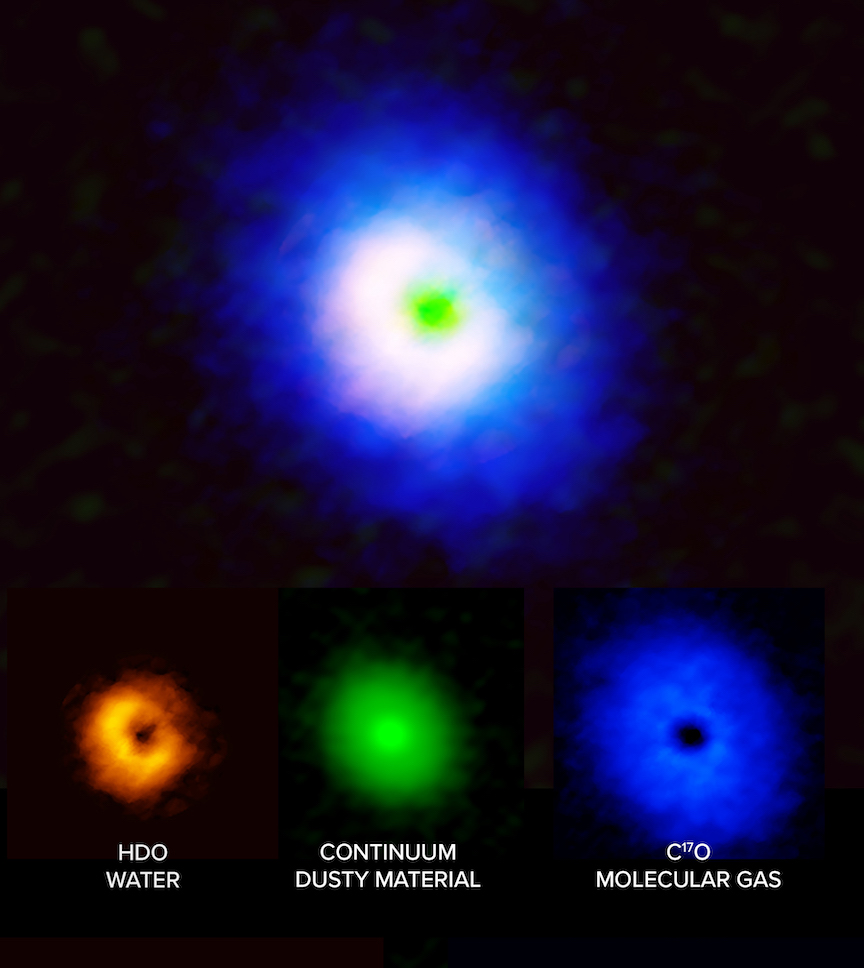
The team used ALMA, an array of radio telescopes in northern Chile, to observe the gaseous water in V883 Orionis. Thanks to its sensitivity and ability to discern small details they were able to both detect the water and determine its composition, as well as map its distribution within the disc. From the observations, they found this disc contains at least 1200 times the amount of water in all Earth’s oceans.
In the future, they hope to use ESO’s upcoming Extremely Large Telescope and its first-generation instrument METIS. This mid-infrared instrument will be able to resolve the gas-phase of water in these types of discs, strengthening the link of water’s path all the way from star-forming clouds to solar systems. ”This will give us a much more complete view of the ice and gas in planet-forming discs,” concludes Leemker.
More information
This research was presented in a paper Deuterium enriched water ties planet forming disks to comets and protostars, to appear in Nature (doi: 10.1038/s41586-022-05676-z).
The team is composed of John J. Tobin (National Radio Astronomy Observatory, USA), Merel L. R. van’t Hoff (Department of Astronomy, University of Michigan, USA), Margot Leemker (Leiden Observatory, Leiden University, the Netherlands [Leiden]) , Ewine F. van Dishoeck (Leiden), Teresa Paneque-Carreño (Leiden; European Southern Observatory, Germany), Kenji Furuya (National Astronomical Observatory of Japan, Japan), Daniel Harsono (Institute of Astronomy, National Tsing Hua University, Taiwan), Magnus V. Persson (Department of Space, Earth and Environment, Chalmers University of Technology, Onsala Space Observatory, Sweden), L. Ilsedore Cleeves (Department of Astronomy, University of Virginia, USA), Patrick D. Sheehan (Center for Interdisciplinary Exploration and Research in Astronomy, Northwestern University, USA) and Lucas Cieza (Núcleo de Astronomía, Facultad de Ingeniería, Millennium Nucleus on Young Exoplanets and their Moons, Universidad Diego Portales, Chile).
The European Southern Observatory (ESO) enables scientists worldwide to discover the secrets of the Universe for the benefit of all. We design, build and operate world-class observatories on the ground — which astronomers use to tackle exciting questions and spread the fascination of astronomy — and promote international collaboration in astronomy. Established as an intergovernmental organisation in 1962, today ESO is supported by 16 Member States (Austria, Belgium, the Czech Republic, Denmark, France, Finland, Germany, Ireland, Italy, the Netherlands, Poland, Portugal, Spain, Sweden, Switzerland and the United Kingdom), along with the host state of Chile and with Australia as a Strategic Partner. ESO’s headquarters and its visitor centre and planetarium, the ESO Supernova, are located close to Munich in Germany, while the Chilean Atacama Desert, a marvellous place with unique conditions to observe the sky, hosts our telescopes. ESO operates three observing sites: La Silla, Paranal and Chajnantor. At Paranal, ESO operates the Very Large Telescope and its Very Large Telescope Interferometer, as well as survey telescopes such as VISTA. Also at Paranal ESO will host and operate the Cherenkov Telescope Array South, the world’s largest and most sensitive gamma-ray observatory. Together with international partners, ESO operates ALMA on Chajnantor, a facility that observes the skies in the millimetre and submillimetre range. At Cerro Armazones, near Paranal, we are building “the world’s biggest eye on the sky” — ESO’s Extremely Large Telescope. From our offices in Santiago, Chile we support our operations in the country and engage with Chilean partners and society.
Deuterium enriched water ties planet forming disks to comets and protostars, Nature (full text)
Astrobiology, Astrochemistry


